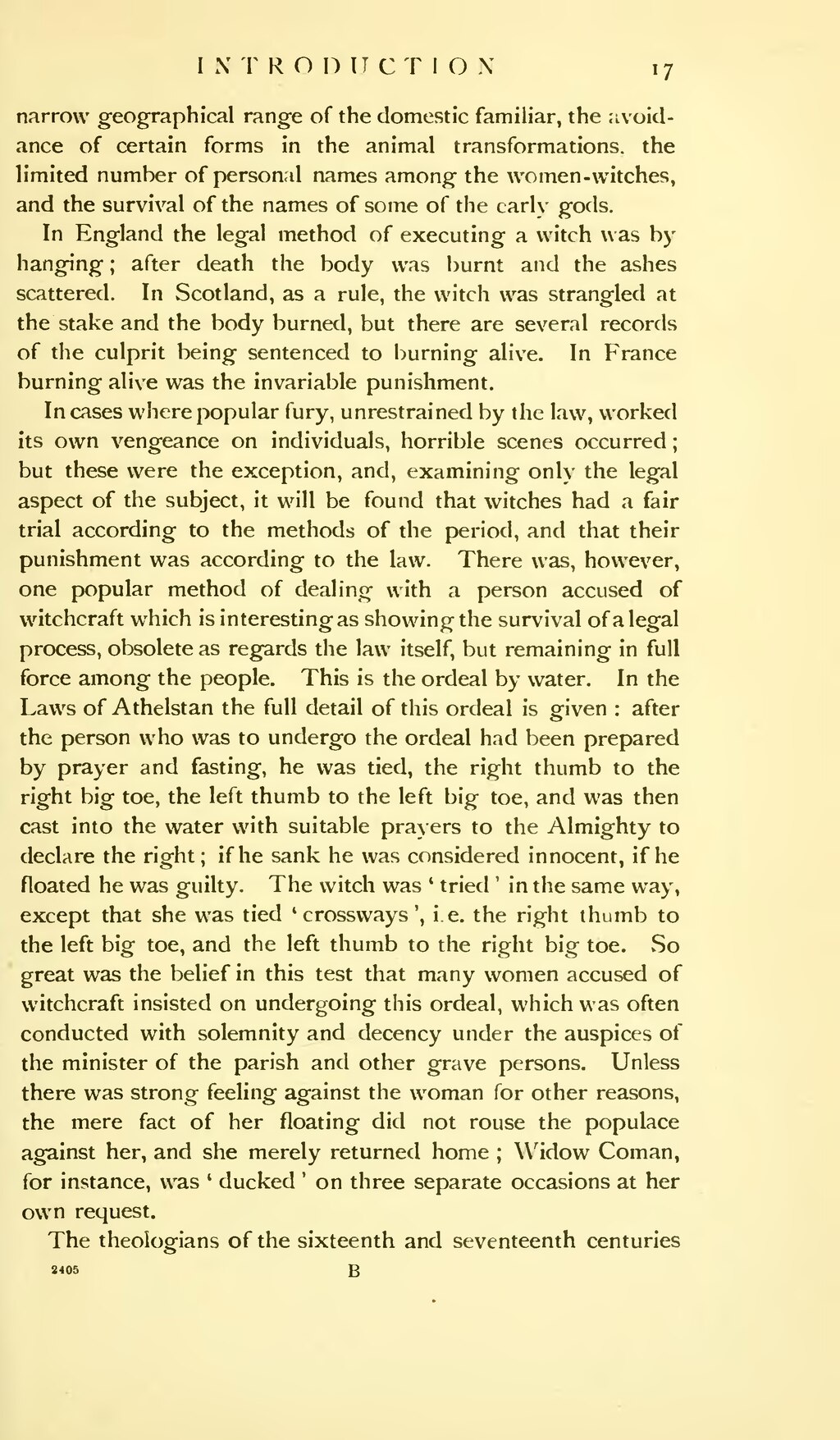narrow geographical range of the domestic familiar, the avoidance of certain forms in the animal transformations, the limited number of personal names among the women-witches, and the survival of the names of some of the early gods.
In England the legal method of executing a witch was by hanging; after death the body was burnt and the ashes scattered. In Scotland, as a rule, the witch was strangled at the stake and the body burned, but there are several records of the culprit being sentenced to burning alive. In France burning alive was the invariable punishment.
In cases where popular fury, unrestrained by the law, worked its own vengeance on individuals, horrible scenes occurred; but these were the exception, and, examining only the legal aspect of the subject, it will be found that witches had a fair trial according to the methods of the period, and that their punishment was according to the law. There was, however, one popular method of dealing with a person accused of witchcraft which is interesting as showing the survival of a legal process, obsolete as regards the law itself, but remaining in full force among the people. This is the ordeal by water. In the Laws of Athelstan the full detail of this ordeal is given: after the person who was to undergo the ordeal had been prepared by prayer and fasting, he was tied, the right thumb to the right big toe, the left thumb to the left big toe, and was then cast into the water with suitable prayers to the Almighty to declare the right; if he sank he was considered innocent, if he floated he was guilty. The witch was ‘tried’ in the same way, except that she was tied ‘crossways’, i.e. the right thumb to the left big toe, and the left thumb to the right big toe. So great was the belief in this test that many women accused of witchcraft insisted on undergoing this ordeal, which was often conducted with solemnity and decency under the auspices of the minister of the parish and other grave persons. Unless there was strong feeling against the woman for other reasons, the mere fact of her floating did not rouse the populace against her, and she merely returned home; Widow Coman, for instance, was ‘ducked’ on three separate occasions at her own request.
The theologians of the sixteenth and seventeenth centuries
